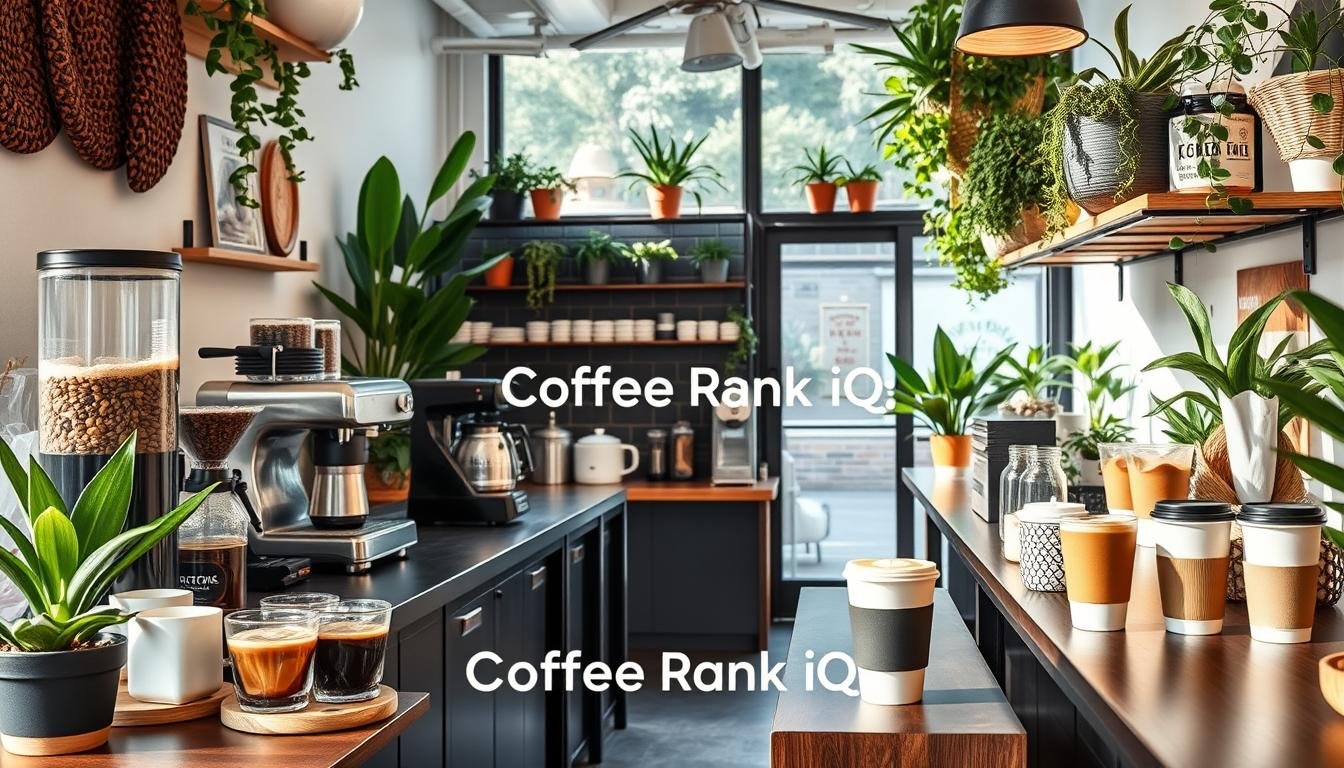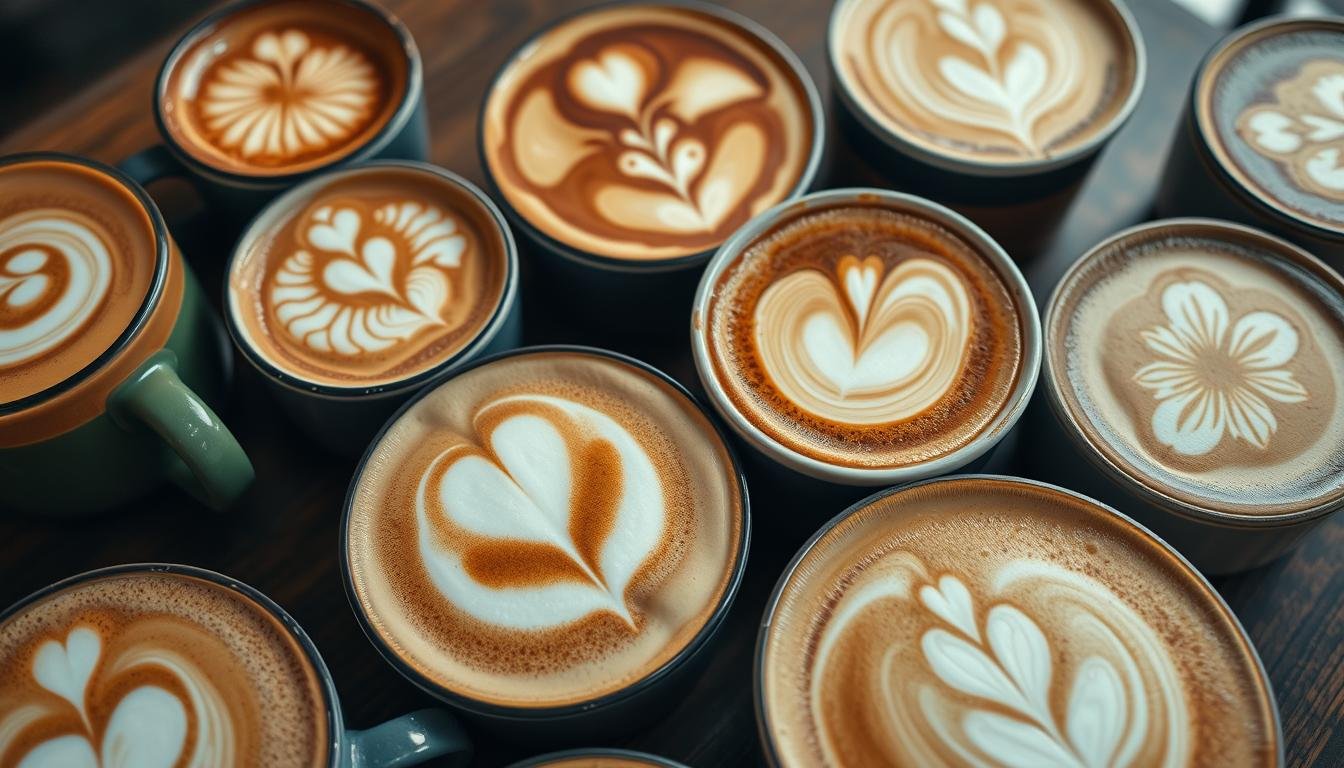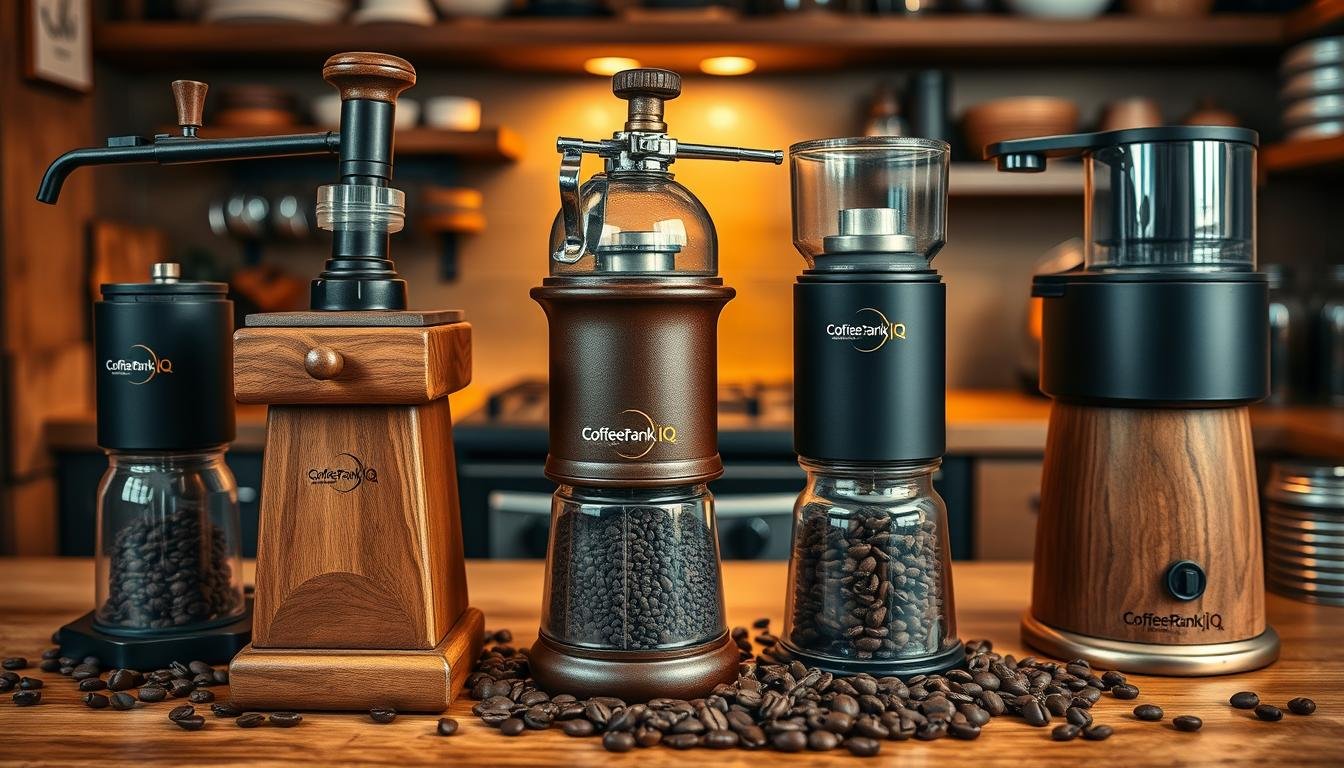The global coffee market is experiencing a remarkable surge, valued at a staggering US$132.1 billion in 2024 and projected to reach US$166.4 billion by 2029. This extraordinary growth is fueled by a seismic shift in consumer preferences, with Millennials and Gen Z accounting for a significant 52% of the global population and driving innovation across the coffee industry.
As the world’s coffee consumption continues to skyrocket, the industry is witnessing a fascinating evolution, marked by the rise of sustainable and ethical practices, the emergence of cold brew and nitro coffee, and the increased popularity of plant-based milk alternatives. Additionally, the coffee landscape is being reshaped by the growth of coffee subscriptions, the emergence of experiential coffee shop concepts, and the integration of technology with traditional brewing methods.
In this article, we’ll delve into the captivating trends that will define the coffee industry in the upcoming year, offering insights that will help you stay ahead of the curve and elevate your coffee experience.
Key Takeaways
- The global coffee market is expected to reach $166.4 billion by 2029, driven by Millennials and Gen Z consumers.
- Sustainability, cold brew, and plant-based milk alternatives are emerging as significant trends in the coffee industry.
- Coffee subscriptions, experiential coffee shop concepts, and the fusion of technology with traditional brewing are reshaping the coffee landscape.
- Consumers are seeking unique flavor profiles and the coffee shop experience at home, leading to the popularity of specialty roasters and innovative coffee products.
- The coffee industry is embracing environmentally responsible practices and focusing on the health and wellness aspects of coffee consumption.
The Rise of Sustainable and Ethical Coffee Practices
As the world grapples with the impacts of climate change, the coffee industry is at the forefront of adopting sustainable and environmentally conscious practices. Consumers, particularly Millennials and Generation Z, are increasingly seeking out coffee brands that prioritize sustainability and ethical sourcing.
Environmentally Conscious Farming Methods
Coffee farmers are embracing innovative farming techniques to mitigate the effects of climate change and preserve the delicate ecosystems where coffee is grown. From implementing regenerative agriculture practices to investing in climate-resilient coffee varietals, these growers are demonstrating their commitment to environmental stewardship. By adopting sustainable farming methods, they are able to produce high-quality beans while protecting the land for future generations.
Fair Trade and Direct Trade Initiatives
In addition to environmentally conscious farming, the coffee industry is also witnessing a surge in fair trade and direct trade initiatives. These programs ensure that coffee farmers receive a fair price for their harvest, enabling them to maintain a sustainable livelihood. Moreover, these initiatives promote transparency and traceability, allowing consumers to connect with the origin of their coffee and the communities that produce it.
| Sustainable Coffee Farming | Ethical Coffee Sourcing |
|---|---|
|
|
“Sustainability is no longer just a buzzword in the coffee industry – it’s a fundamental necessity. Consumers are demanding more from their coffee, and brands that can deliver on environmental and ethical practices are poised to thrive.”
As the coffee market continues to evolve, the rise of sustainable and ethical practices is a clear indication that consumers are prioritizing their environmental and social impact. By embracing these initiatives, coffee companies can not only meet the growing demand for responsible sourcing but also contribute to a more sustainable future for the industry as a whole.
Emergence of Cold Brew and Nitro Coffee
In the wake of the pandemic, at-home coffee consumption has surged, with consumers seeking convenient and budget-friendly options that don’t compromise on quality. This trend has given rise to the growing popularity of cold brew and nitro coffee, two innovative brewing techniques that offer unique flavor profiles and an enhanced coffee experience.
Cold brew coffee, made by steeping grounds in cold or room-temperature water for an extended period, has become a beloved choice among health-conscious and on-the-go coffee drinkers. Its naturally sweeter, less acidic taste appeals to a wide range of palates, and the convenience of ready-to-drink cold brew options has made it a staple in many households.
Nitro coffee, on the other hand, is a nitrogen-infused cold brew that delivers a creamy, smooth, and slightly effervescent texture. The infusion of nitrogen gas creates a velvety mouthfeel and a luscious head, reminiscent of a draft beer. Brands like Starbucks, Peet’s Coffee, and Blue Bottle have capitalized on the growing demand for nitro coffee, introducing it to their menus and captivating coffee enthusiasts with its unique sensory experience.
- The cold brew market is projected to reach $1.37 billion in North America between 2020 and 2025.
- Nitro Cold Brews are popular among Gen Z and Millennial coffee drinkers for their mildly bitter, smoother, and creamier flavor.
As consumer preferences evolve, the rise of cold brew and nitro coffee demonstrates the coffee industry’s ability to adapt and cater to the changing needs of the market. These innovative brewing techniques not only offer a refreshing alternative to traditional hot coffee but also showcase the industry’s commitment to delivering a diverse range of coffee experiences to satisfy the ever-evolving tastes of modern coffee lovers.
coffee trends to watch for in the upcoming year
Innovative Brewing Techniques
As the coffee industry continues to evolve, brands are exploring innovative brewing techniques to meet the growing demand for barista-quality experiences at home. From advanced filtration systems that preserve the complex flavor profiles of quality coffee to the rising popularity of ready-to-drink formats, the focus is on developing new products that cater to the modern consumer’s desire for convenience without sacrificing taste.
One notable trend is the increased interest in cold brew and nitro coffee. Search queries for “cold brew coffee,” “cold brew recipe,” and “best cold brew coffee makers” are soaring, reflecting the continued craze for these refreshing, smooth, and low-acidity coffee options. Additionally, the growing popularity of “nitro coffee” suggests that consumers are seeking new and unique ways to enjoy their daily cup of joe.
Unique Flavor Profiles
As coffee becomes a more versatile and customizable beverage, consumers are seeking out unique flavor profiles, including international and non-traditional flavors. The rising search interest in “single-origin coffee,” “Ethiopian Yirgacheffe,” and “Guatemalan Antigua” indicates a significant demand for origin-specific and artisanal coffee experiences.
Moreover, the exploration of globally inspired flavors, such as those from Asia and Latin America, is on the rise, driven by the preferences of younger generations like Gen Z. This shift towards innovative and diverse flavor profiles is shaping the coffee industry, with brands and roasters continuously striving to meet the evolving tastes of their discerning customers.
“The coffee industry is at a turning point globally, contemplating embracing digital technologies to conform to impending deforestation regulations or risking market share loss.”
In the years ahead, coffee enthusiasts can expect to see a wider array of creative and unexpected flavor combinations, as the industry responds to the growing consumer demand for unique and personalized coffee experiences.
Growth of Coffee Subscriptions and Speciality Roasters
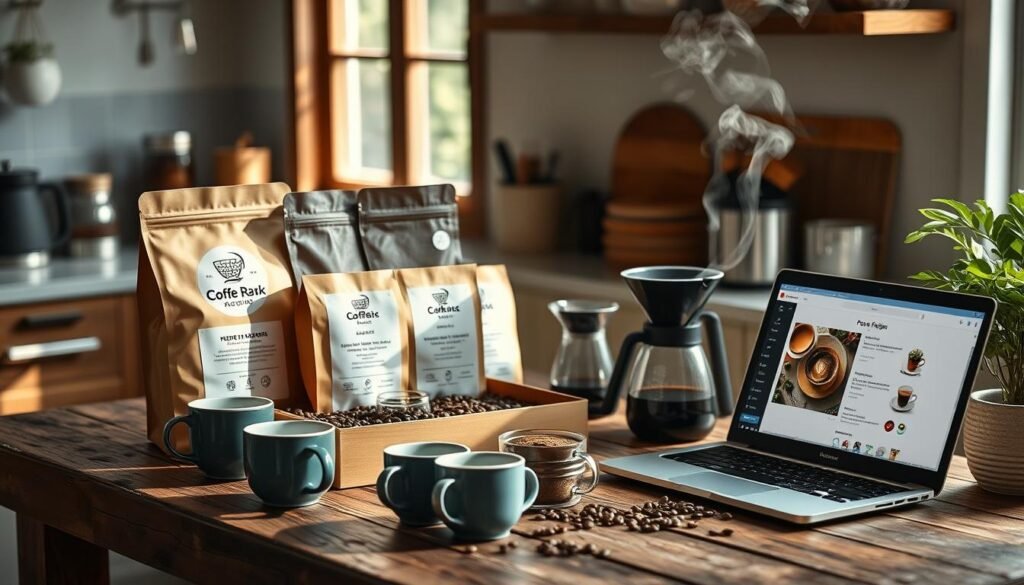
In the face of rising inflation and strained budgets, coffee enthusiasts are seeking the coffee shop experience at home. This trend has led to a surge in demand for coffee subscriptions and specialty coffee roasters, as consumers look for convenient and high-quality coffee options they can enjoy in the comfort of their own homes. Brands are responding to this shift by offering barista-quality experiences through innovative product development and delivery.
Coffee subscriptions are becoming an increasingly popular business model, providing consumers with the convenience and cost-saving advantages of accessing exceptional coffee from the comfort of their homes. Services like the Swiss Water Decaf Curated Subscription, La Marzocco Home Espresso Subscription, and Kaffebox offer expertly curated selections from small-batch roasters around the world, allowing coffee enthusiasts to explore new and unique blends and origins.
| Subscription Service | Featured Roasters |
|---|---|
| Swiss Water Decaf Curated Subscription | Cafe Grumpy, Demitasse, Equator Coffees, Kuma Coffee, Three Keys Coffee |
| La Marzocco Home Espresso Subscription | Airship Coffee, Wonderstate Coffee, Deadstock Coffee, Idle Hands |
| Kaffebox | Coffee Collective, Tim Wendelboe, Standout Coffee, Mjosen Kaffe |
| Kumquat Coffee’s KQ Coffee Club | Fritz Coffee, April Coffee, Lot 61, Knotted |
| Dayglow Coffee’s Discovery Subscription | Dak, Uncommon, Friedhats |
In addition to subscription services, consumers are also turning to specialty coffee roasters, drawn to the quality and unique flavor profiles they offer. Renowned roasters like Joe Coffee Company, The Barn, Dune Coffee Roasters, and Equator Coffees are meeting this demand, providing a premium coffee experience for discerning customers.
As the coffee industry continues to evolve, the growth of coffee subscriptions and specialty roasters is a trend worth watching. By offering convenience, quality, and a diverse range of delicious options, these innovative brands are redefining the way consumers enjoy their daily cup of coffee.
Experiential Coffee Shop Concepts
The coffee industry is undergoing a profound transformation, with the emergence of innovative experiential coffee shop concepts that seamlessly blend technology and traditional brewing techniques. This fusion creates a captivating experience for tech-savvy consumers, redefining the way we interact with and appreciate coffee.
Fusion of Technology and Traditional Brewing
Cafes are embracing technological advancements such as AI-powered service and cloud-based cash registers to enhance operational efficiency and customer experience. Specialty brewing methods like pour-over, cold brew, and espresso are gaining popularity, catering to unique flavors and experiences. The rise of single-origin and micro-lot coffees, driven by consumer demand for distinct flavors and cleaner, organic products, further elevates the coffee shop experience.
Emphasis on Sustainability and Design
Sustainability efforts in cafes include the use of eco-friendly equipment, energy-efficient features, and sustainable building techniques to reduce carbon footprint and promote environmental friendliness. Interior design plays a crucial role in shaping the cafe experience, with a focus on creating inviting spaces that combine aesthetics with functionality. Sustainable materials and green spaces are integrated into cafe interiors, utilizing recycled and upcycled decor to create eco-friendly environments.
These experiential coffee shop concepts, with their fusion of technology and traditional brewing techniques and an emphasis on sustainability and design, are redefining the coffee shop experience. They serve as social and environmental statements, catering to the evolving preferences of tech-savvy and environmentally conscious consumers.
Rise of Plant-Based Milk Alternatives
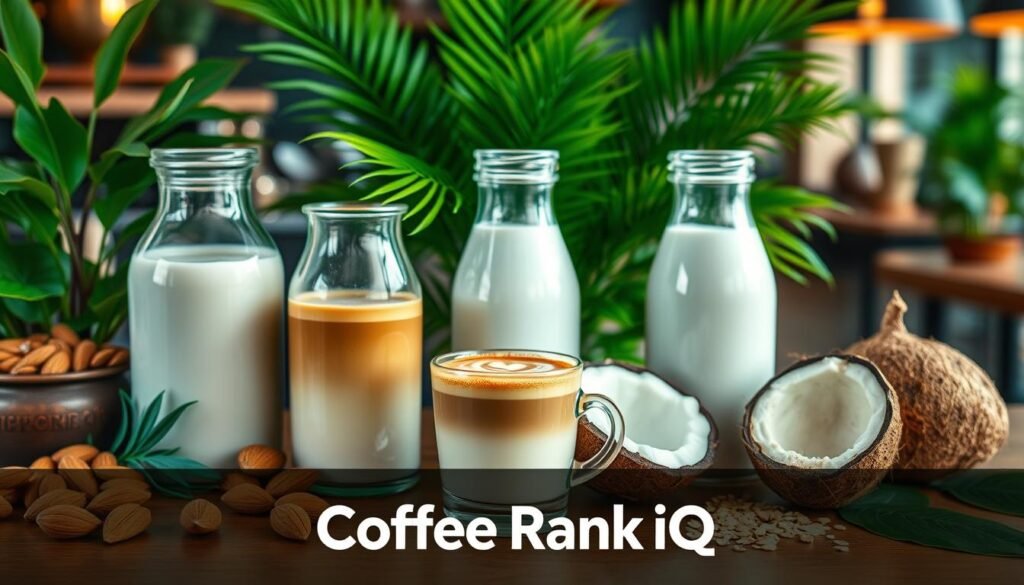
The plant-based milk alternatives market is experiencing a notable surge in popularity, driven by consumer demand for healthier, more sustainable options. As the preference for plant-based diets continues to grow, especially among younger generations, the demand for plant-based milk alternatives has skyrocketed.
Almond milk, which currently constitutes 58% of the plant-based milk category, has seen a slight decline in sales, while oat milk has emerged as a fast-growing alternative, representing 24% of the market. Additionally, plant-based cream cheese and refrigerated desserts have also gained significant traction, showcasing the diversification of the plant-based dairy sector.
| Product Category | Dollar Sales Growth | Volume Growth |
|---|---|---|
| Almond Milk | -8.5% | -9.4% |
| Oat Milk | Flat | 0.2% |
| Plant-Based Cream Cheese | 5.2% | 8.1% |
| Plant-Based Refrigerated Desserts | 3.4% | 2.5% |
| Plant-Based Refrigerated Dips | 1.3% | 8.8% |
While plant-based milk alternatives have experienced a slight sales decline, they still maintain a strong presence, accounting for 36% of all plant-based food dollar sales. The global plant-based milk category is forecasted to have a CAGR of 4.1%, and plant-based yogurt a CAGR of 4.2% through 2029, indicating a promising future for these plant-based milk alternatives.
“Over 70% of plant-forward consumers consume dairy alternatives, per ADM Outside Voice.”
As consumer awareness and demand for sustainable and ethical food choices continue to grow, the rise of plant-based milk alternatives is poised to reshape the dairy industry, offering consumers a diverse range of options that cater to their health, environmental, and ethical concerns.
Coffee-Infused Products and Beverages
The world of coffee is expanding beyond the traditional morning cup, with an array of innovative coffee-infused products and beverages captivating the taste buds of consumers. From coffee-infused cocktails and mocktails to coffee-flavored snacks and desserts, the versatility of the coffee bean is being celebrated like never before.
Coffee-Infused Cocktails and Mocktails
Signature drinks continue to gain popularity over basic coffee drinks, reflecting a growing demand for coffee to be integrated into diverse consumption occasions. Coffee-infused cocktails are becoming increasingly sought-after, with bartenders and mixologists crafting unique concoctions that showcase the rich, bold flavors of coffee. Likewise, coffee-infused mocktails are offering a sophisticated and caffeine-free alternative, appealing to those seeking a unique coffee experience without the alcohol.
Coffee-Flavored Snacks and Desserts
The love for coffee extends beyond the beverage realm, with a growing demand for coffee-flavored snacks and desserts. From coffee-infused ice creams and chocolates to coffee-flavored cookies and cakes, the versatility of coffee as a flavoring agent is being embraced by the food industry. These indulgent treats not only satisfy cravings but also offer a delightful way to savor the beloved coffee flavor throughout the day.
“Coffee is no longer just about the ‘brown bean water’ but is being used in a variety of innovative products and beverages.”
As the coffee industry continues to evolve, consumers are seeking new and exciting ways to incorporate their favorite brew into their daily lives. This trend reflects a growing appreciation for the depth and complexity of coffee, as well as a desire for unique and memorable coffee experiences that extend beyond the traditional cup.
Conclusion
The coffee market is undergoing rapid transformation, driven by evolving consumer preferences, technological advancements, and a focus on sustainability and ethical practices. Brands must stay attuned to these emerging trends to meet the changing demands of coffee drinkers, particularly Millennials and Gen Z, who are shaping the future of the industry.
By embracing innovative brewing techniques, unique flavor profiles, experiential coffee shop concepts, and a commitment to sustainability, brands can position themselves for success in the rapidly evolving coffee landscape. As the industry continues to adapt to climate change threats and shifting supply chains, a renewed emphasis on ethical and sustainable sourcing will be crucial.
Moreover, the blurring of category boundaries and the rise of plant-based and lab-cultivated coffee alternatives present both challenges and opportunities for brands to innovate and cater to the evolving preferences of coffee enthusiasts. By staying ahead of these trends, brands can capitalize on the growing demand for energy-boosting coffee products and the increasing popularity of cold brew and nitro coffee.
FAQ
What are the key factors driving growth in the global coffee market?
The global coffee market is experiencing significant growth, driven by demographic shifts, with younger consumers starting to drink coffee at a younger age and coffee becoming a trendy and versatile beverage. Café culture is also growing rapidly, especially in emerging markets, and geographic expansion is notable in Asia. Consumers, particularly Millennials and Gen Z, are driving innovation within the coffee market, prioritizing convenience, sustainability, and unique experiences.
How are sustainability and ethical practices shaping the coffee industry?
Sustainability remains a key coffee market trend, as climate change impacts crop quality and availability. Consumers, especially Millennials and Gen Z, are increasingly seeking environmentally responsible and ethically produced coffee brands. Brands are responding by investing in climate-resilient beans and other earth-friendly solutions, such as environmentally conscious farming methods and fair trade and direct trade initiatives.
What are the trends in at-home coffee consumption?
During the pandemic era, at-home consumption of coffee increased, boosting sales of instant coffee, coffee mixes, and ready-to-drink (RTD) coffee. This trend remains strong, especially with recent inflationary pressures, as consumers seek convenient and budget-friendly coffee options without compromising quality. The rise of cold brew and nitro coffee is part of this trend, as these formats appeal to consumers looking for innovative brewing techniques and unique flavor profiles that can be enjoyed at home.
How are brands innovating in coffee product development?
Developing new coffee products requires a deep understanding of consumer sensory preferences, as coffee has over 250 compounds influencing its flavor and aroma. Brands are exploring innovative brewing techniques, such as those that preserve the complex flavor profile of quality coffee in ready-to-drink formats, to meet the demand for barista-quality experiences at home. Additionally, consumers are seeking unique flavor profiles, including international and non-traditional flavors, as coffee becomes a more versatile and customizable beverage.
What is the impact of inflation on coffee consumer behavior?
With rising inflation and strained budgets, consumers are seeking the coffee shop experience at home using value formats and blends that replicate barista-quality coffee. This trend has led to the growth of coffee subscriptions and specialty coffee roasters, as consumers look for convenient and high-quality coffee options they can enjoy in the comfort of their own homes.
How are coffee shop experiences evolving?
The coffee market has evolved through five waves, with the current fifth wave focusing on the experiential and business aspects of coffee. This wave integrates technological advancements with traditional brewing techniques, creating new products and experiences for tech-savvy consumers. Innovations include smart ordering systems, adaptable café layouts, and sustainable materials in café and packaging design.
What is the demand for low-caffeine and caffeine-free coffee options?
Consumers the world over, but especially in western markets, are seeking lower-caffeine and caffeine-free beverage options, driven by concerns over caffeine’s effect on sleep quality and a desire to avoid jitters. This presents an opportunity for brands to meet demand with not only decaffeinated but also reduced/low-caffeine coffee offerings, with clear messaging around caffeine content and targeting evening consumption occasions.
How are coffee-infused products and beverages gaining popularity?
Coffee is no longer just about the “brown bean water” but is being used in a variety of innovative products and beverages. Signature drinks continue to gain sales over basic coffee drinks, and we are seeing the rise of coffee-infused cocktails and mocktails, as well as coffee-flavored snacks and desserts. This trend reflects the growing demand for coffee to be integrated into new and diverse consumption occasions, beyond the traditional morning cup.

